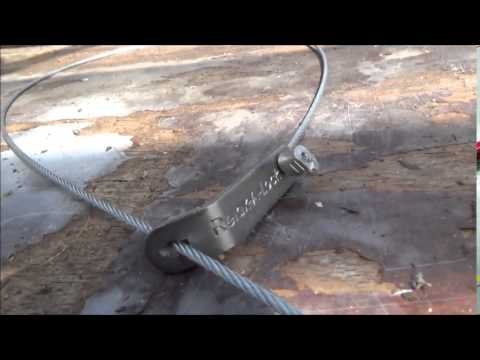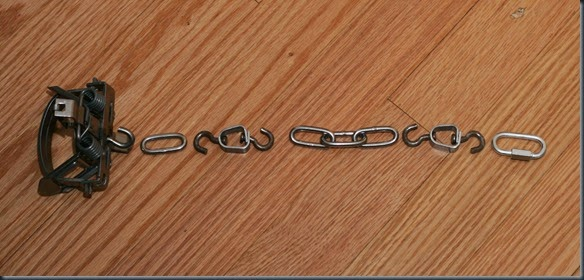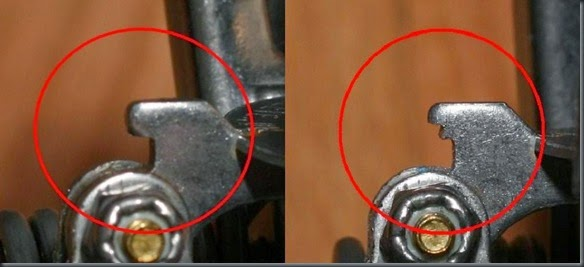-
info@aaanimalcontrol.com
Call us for help in your town
Humane Wildlife Education
Trap Modifications

9.25.2020 - Author: Philip J. Nichols
Modifying traps is work, some would call not necessary. Many good fur trappers choose to use traps right out of the box, but most like to tinker with their gear in between seasons. Nuisance trappers do not have that kind of time and need to be confident the traps and gear work as advertised. Nuisance trapping is not the same as fur trapping. Fur trappers roll into an area and catch what they call the “cream ” (surplus animals in that location) then move on. This assures a steady population from which the cream can be skimmed every season. A nuisance trapper is concerned with solving an immediate problem, and may have to remove all of the creatures causing the problem. For that, he needs to have confidence there will be no glitches with gear.
The problem can involve a colony numbering hundreds, or just one animal. The traps and sets must function flawlessly. That is not to say fur trappers do not strive for good “sets.” But if a fur trapper does have a set fail, it is no big deal. The animal escaping a set is now educated so to
speak, and nuisance trappers cannot afford to educate their target. The key to making good sets is consistency. Mechanical consistency in traps means they all have the same firing, locking, swivelling and anchoring/bedding characteristics. The minute details of these qualities must be worked out by every trapper to develop consistency and confidence in method. Given the expense of gear, it is also a benefit to add modifications that prolong gear life. Finally, modifications can make any trapping device more humane.
Cage Trap Modifications
Cage traps chosen by nuisance trappers are generally more expensive, species specific, and made with better materials and build. One simple modification useful on any cage trap is something to prevent the animal from tipping over or moving the trap. Raccoons and bears are notorious for treating a cage trap like it was a garbage can. One way to hinder the animal from moving the trap before or after capture, is to stake the trap to the ground. Connect a two lap link through the cage wire, one at
the front, and the other on the rear, opposite side, and do not close the link. A stake through each link will do the trick.
 Cages made of raw metal should be painted, or otherwise treated to prevent rust. Triggering devices are not generally altered by the user, but some can be filed to remove burrs.
Cages made of raw metal should be painted, or otherwise treated to prevent rust. Triggering devices are not generally altered by the user, but some can be filed to remove burrs.
Snare Modifications
A snare is useful in many live capture situations, where other devices cannot be used for one reason or another. A snare can be modified, then set in a way that restraints the target animal without killing it. The key to doing this is using a relaxing snare lock. This lock will back off or “relax” when the animal stops pulling. This snare is non-lethal whether the loop closes around the neck or body. This discussion is for those who purchase ready made snares which often are not made with the greatest of attention to detail. A typical flaw is the cable ends stick out from the ferrule. These ends should be ground to be even with the ferrule. The swivel must turn freely. On the below illustrated snare, the ferrule sto is bent at a right angle to the cable with the bend being close to the stop. If the bend is farther away, use pliers to straighten the cable, then bend it correctly as seen below.
 LEFT: Lock, loop and ferrule stop on a non-lethal relaxing snare (“cable restraint”)
LEFT: Lock, loop and ferrule stop on a non-lethal relaxing snare (“cable restraint”)
The loop on an “out of the box” snare is teardrop shaped, designed to close when the animal enters the loop and pulls the loop shut. The loop. This is fine for some animals such as beaver, who are used to bulling
through obstacles. However, some coyote and fox will back out of a snare before pulling it closed. A snare set for these canines should be modified to spring closed upon being touched, before the animal can back out. The term for this modification is “loading.”
I'll try describing snare loading. The end goal is to change the shape of the loop from teardrop to round. Open the snare all the way. Open to the swivel or the deer stop, if you use one. As a right-hander (lefties reverse), hold the snare open throughout the procedure with your left hand, with the lock on
top and the loop on the bottom just as the snare would be set in place. Wear a “scent free” leather glove. With your right thumb on the inside of the snare cable and your fingers tightly closed around the snare cable, push forward and around the circle of the snare for about
1/4 or 1/3 of the distance of circumference of the loop. Think of putting curls in a ribbon. You will probably have to repeat this step 3 or 4 times until you get the desired effect, which is rounding the shape so the snare closes as if
powered by a spring. Be sure to do this in the natural direction the cable wants to go, as it has a memory from being on the spool. Loaded snares should be used on bobcats, otter (unless set in running water), and canines. A loaded snare when fired will make solid enough contact with the animal to continue to close no matter which direction the animal moves. Loading is a good technique, but requires practice.
Paw Hold Steel Trap Modification
A paw hold steel trap is used to capture and restrain an animal. To be humane and efficient, the trap must be of correct size for the target animal. The raw steel has a coat of machine oil that needs to be removed with soap and hot water. The steel will quickly rust if not dipped min trap dye, or painted with Rustoleum
The trap must have multiple swivels from the trap to the other end of the chain...one swivel at the trap, one swivel in the middle of the chain, and one swivel at the anchor end of the chain. Most “out of the box” traps come
with one swivel, usually at the trap. Here is an illustration of a trap with three swivels, and where they are positioned on the chain: The J swivel connects to a hole drilled into the center of the trap base.
 “J” swivel at trap base “BOX” swivel mid chain “Box” swivel at chain end
“J” swivel at trap base “BOX” swivel mid chain “Box” swivel at chain end
Three swivels on a trap will prevent foot or bone damage. This modification is mandatory on traps targeting animals (wolf, otter, fisher, etc.) that are to be relocated, as per government restocking program protocol.
Another modification to consider is “night latching” of the trap trigger and pan. This mod allows the trap’s trigger to be set always in the same place, by filing a notch in the dog where it engages with the trigger.
 Unmodified dog Modified dog
Unmodified dog Modified dog
Full details of creating a night latch can be found at:
“http://woodtrekker.blogspot.com/2014/09/foothold-trap-modification-night-l atch.html”
Body Grip (Lethal) Traps
The jaws of a body grip trap should be smooth and free of rust. The raw steel should be treated as described for paw hold traps. Inspect the trap for factory defects. The trigger notch may need filing with a small round file because too shallow of a notch will cause unintentional firing. Another common defect is the rivet holding the jaws together. If loose, drill it out and replace it with a nut and bolt. Most body grip traps do not come with swivels. Why would the trap need swivels when the animal is dead? Once in a while the animal is not killed, so the trap should have at least two
standard BOX swivels, one close to the trap, the other at the end of the chain. This prevents the chain from kinking when a live animal is rolling around.
For more wildlife stories, click my Wildlife Blog
or click my below banner to hire a local trapper.




















